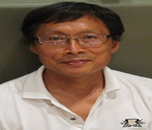Day 1 :
Keynote Forum
Donglu Shi
University of Cincinnati, USA
Keynote: In-Vitro Depth-Dependent Photo thermal Ablation of Human Adenocarcinoma by Polystyrene Stabilized Fe3O4
Time : 09:30-10:10

Biography:
Donglu Shi received his Ph. D. in Materials Science and Engineering in 1986 from the University of Massachusetts at Amherst. In 1995, Donglu Shi joined the faculty as an Associate Professor in the Department of Materials Science and Engineering at University of Cincinnati. He was promoted to the full professor position,rnwith tenure, in 2001 at University of Cincinnati. He is currently the Chair of the Materials Science and Engineering Program at the University of Cincinnati. Donglu Shi has so far published 250 refereed SCI journal publications including Physical Review Letters, Nature, ACS Nano, and Advanced Materials.
Abstract:
Nanoparticle mediated photo thermal ablation of cancerous tissue shows promising results as an efficacious treatment method. However it is important to understand the effects of greater laser attenuation on photothermal efficacy mediated by changes in the scattering and absorption profiles of soft tissue. Photothermal efficacy using a near infrared (NIR) 785nm laser irradiating polystyrene (PS) stabilized magnetite (Fe3O4) nanoparticles (PS-Fe3O4) is examined on MDA-MB-231 human mammary gland adenocarcinoma in-vitro. Agarose gel columns of various depths were created to simulate soft tissue and subsequently used for NIR laser attenuation. PS was found to significantly improve magnetite nanoparticle stability in modified Hank’s Balanced Salt Solution, serum containing media, reduces innate toxicity over 48 hours compared to uncoated magnetite, and allows for effective hyperthermic ablation. Agar gel layers provided similar optical attenuation in the NIR region to soft tissue and provided a convenient base gel material for advanced soft tissue modeling. The NIR laser power usedrndid not solely affect cellular viability, but allowed for photothermal ablation through all examined agar gel depths.
Keynote Forum
Rafael Vazquez-Duhalt
National Autonomous University of Mexico, Mexico
Keynote: Design of a VLP‑nanovehicle for CYP450 enzymatic activity deliveries
Time : 10:10-10:50

Biography:
Rafael Vazquez‑Duhalt is working as a full Professor at the Center for Nanosciences and Nanotechnology of the National University of Mexico. He earned his PhD degree in Biological Sciences from the University of Geneva, Switzerland. In addition, he carried out a three-years Post-doctoral work in the University of Alberta, Canada. He has been a visiting Professor at the University of Maryland and at the University of California, San Diego. He earned the Scopus Prize from Elsevier Publisher as Mexican researcher with higher H factor in Biotechnology and Agronomy fields in 2011, the Research Merit State Prize from the Morelos State Government in 2009, and “Thomson-Reuters” Prize to the most cited Mexican research article in Microbiology in the decade 1999-2009 in 2009. He is the author of 3 patents, published 2 books and more than 145 scientific articles.
Abstract:
The intracellular delivery of enzymes for therapeutic use has a promising future for the treatment of several diseases such as genetic disorders and cancer. Virus-like particles offer an interesting platform for enzymatic delivery to targeted cells because of their great cargo capacity and the enhancement of the biocatalyst stability towards several factors important in the practical application of these nanoparticles. We have designed a nano-bioreactor based on the encapsulation of a cytochrome P450 (CYP) inside the capsid derived from the bacteriophage P22. An enhanced peroxigenase, CYPBM3, was selected as a model enzyme because of its potential in enzyme prodrug therapy. A total of 109 enzymes per capsid were encapsulated with a 70% retention of activity for cytochromes with the correct incorporation of the heme cofactor. Upon encapsulation, the stability of the enzyme towards protease degradation and acidic pH was increased. Cytochrome P450 activity was delivered into human cervix carcinoma cells via transfecting P22-CYP nanoparticles with lipofectamine. This work provides a clear demonstration of the potential of biocatalytic virus-like particles as medical relevant enzymatic delivery vehicles for clinical applications.
Keynote Forum
George Altankov
Institute for Bioengineering of Catalonia, Spain
Keynote: Mesenchymal Stem Cells Behaviour in Nano fibrous Environment
Time : 11:10-11:50

Biography:
George Altankov is ICREA Research Professor in the Institute for Bioengineering of Catalonia. He got his MD in 1974 in Varna Medical Institute, Bulgaria, where also accomplished his PhD (1984). In 1991-1993 he made his postdoc in Southwestern Medical School at Dallas performing studies on the molecular mechanisms of cell adhesion. During his subsequent work in the Bulgarian Academy of Sciences (1985-2005) he grew up to full professor, head of department and deputy Director of the Institute of Biophysics in Sofia. His studies, performed in close collaboration with GKSS Research Centre (Germany), were among the first highlighting that tissue compatibility of materials is strongly dependent on the ability of cells to reorganize surface associated matrix proteins, such as fibronectin, vitronectin, fibrinogen and collagen. His studies resulting in more than 100 publications in peer reviewed journals and books that are frequently cited.
Abstract:
Mimicking the complex intricacies of the extracellular matrix (ECM) including three dimensional configurations were traditionally used for producing living tissues from stem cells. Electrospinning is a technique capable of fabricating nanofibers (NFs) with dimensions similar to those of the natural ECM. An advantage of electro spun NFs is that they can be further designed for organization and cell binding properties which turn them within the most promising scaffold for regenerative Nanomedicine. Here we report on the use of a novel hybrid, fibrinogen/polylactic acid (FBG/PLA) nanofibers to control the overall behaviour and differentiation potential of human adipose derived mesenchymal stem cells (ADMSCs). We were particularly interested on the dorsal and ventral cell response to nanofibers organization (random vs. aligned). We found that upon ventral contact with random nanofibers the cells developed a stellate-like morphology with multiple projections where the well-pronounced focal adhesion complexes suggest a successful cellular interaction. Time-lapse analysis however showed significantly lowered cell movements resulting in relatively short distance that they traverse in multiple directions. Conversely, an elongated cell shape with extended actin cytoskeleton and significantly increased cell mobility were typically observed when cells adhering on aligned NFs. To further follow the dorsal cell response (in third dimension) artificial wounds were created on confluent cell layers and covered with either random or aligned NFs. Time-lapse analysis showed significantly faster wound coverage (within 12 h) upon contact of cells with aligned nanofibers vs. almost absent directional migration on random samples. However, quantitative reverse transcription-polymerase chain reaction analysis for Collagen 2, Collagen 10 and SOX9 genes expression showed favourable chondrogenic response of human ADMSCs cultured on random nanofibers (50 days in complete chondrogenic medium) compared to aligned ones indicating that temporary immobilisation of stem cell might promote their differentiation.
Keynote Forum
Rafael Vazquez-Duhalt
National Autonomous University of Mexico, Mexico
Keynote: Design of a VLP‑nanovehicle for CYP450 enzymatic activity deliverys
Time : 10:10-10:50

Biography:
Rafael Vazquez‑Duhalt is working as a full Professor at the Center for Nanosciences and Nanotechnology of the National University of Mexico. He earned his PhD degree in Biological Sciences from the University of Geneva, Switzerland. In addition, he carried out a three-years Post-doctoral work in the University of Alberta, Canada. He has been a visiting Professor at the University of Maryland and at the University of California, San Diego. He earned the Scopus Prize from Elsevier Publisher as Mexican researcher with higher H factor in Biotechnology and Agronomy fields in 2011, the Research Merit State Prize from the Morelos State Government in 2009, and “Thomson-Reuters” Prize to the most cited Mexican research article in Microbiology in the decade 1999-2009 in 2009. He is the author of 3 patents, published 2 books and more than 145 scientific articles.
Abstract:
The intracellular delivery of enzymes for therapeutic use has a promising future for the treatment of several diseases such as genetic disorders and cancer. Virus-like particles offer an interesting platform for enzymatic delivery to targeted cells because of their great cargo capacity and the enhancement of the biocatalyst stability towards several factors important in the practical application of these nanoparticles. We have designed a nano-bioreactor based on the encapsulation of a cytochrome P450 (CYP) inside the capsid derived from the bacteriophage P22. An enhanced peroxigenase, CYPBM3, was selected as a model enzyme because of its potential in enzyme prodrug therapy. A total of 109 enzymes per capsid were encapsulated with a 70% retention of activity for cytochromes with the correct incorporation of the heme cofactor. Upon encapsulation, the stability of the enzyme towards protease degradation and acidic pH was increased. Cytochrome P450 activity was delivered into human cervix carcinoma cells via transfecting P22-CYP nanoparticles with lipofectamine. This work provides a clear demonstration of the potential of biocatalytic virus-like particles as medical relevant enzymatic delivery vehicles for clinical applications.
- Nanomedicine and Drug Delivery | Nanomedicine and Nanotheranostics | Nanomedicine and Nanobiotechnology
Location: Pailin 2

Chair
Chandrashekhar V Kulkarni
University of Central Lancashire, United Kingdom
Session Introduction
Chandrashekhar V Kulkarni
University of Central Lancashire, UK
Title: Applications of Lipid Nanostructures and Hybrid Systems for Drug Delivery
Time : 11:50-12:20

Biography:
Chandrashekhar V Kulkarni received his PhD in Chemical Biology from University of London with a Marie Curie Fellowship at Imperial College London (2005-2008). Earlier, he completed his BSc (1999) and MSc (2001) from Shivaji University Kolhapur, India and worked in NCL, Pune. He had a few postdoc stints at University of Graz-Austria, University of Bayreuth-Germany and University of Cambridge-UK. In March 2013, he started ‘Lipid Nanostructures Laboratory’. Some of his research interests include model biomembranes, nanostructured lipid particles as carrier systems, and novel nano-bio-applications of lipid nanostructures. He published several papers in these areas. He is currently the Editor of the Elsevier Book Series: Advances in Biomembranes and Lipid-Assemblies.
Abstract:
Being amphiphilic in nature, lipid molecules self-assemble into various nanostructures in aqueous environment. The structural geometries vary from simple spherical to complex 3-dimensional architectures. The applicability of these lipid phases is enhanced by dispersing them into particulate form. These dispersions take the form of oil-in-water emulsions which require either or a combination of stabilizer and high energy. Interesting thing to note is that the original (before dispersion) self-assembly is retained inside the dispersed lipid particles. Recently, we have developed a hybrid system based on various carbon nanotubes (CNTs) and lipid molecules. Both of these components act as mutual stabilizers. Currently, both - CNTs and nanostructured lipid particles are being explored for their drug delivery applications independently. However, our hybrid system combines properties of both the constituents. Another hybrid system is based on immobilization of nanostructured lipid particles in hydrogel films. Fabrication, characterization and applications of these hybrid drug carrier systems will be presented.
Ming-Jun Tsai
China Medical University, Taiwan
Title: Development of temperature-sensitive PEGylated nanostructured lipid carrier for co-delivery of gemcitabine and Baicalein against A549 cell line
Time : 12:20-12:50

Biography:
Ming-Jun Tsai graduated from School of Medicine, Chung Shan Medical University and finished his PhD program on Cheng-Kung University. Dr. Ming-Jun Tsai is now the Chief of Department of Neurology, China Medical University-an Nan Hospital and the Assistant Professor of China Medical University, Taichung, Taiwan. Dr. Tsai focused on the research of drug delivery in clinical diseases. He has published more than 20 papers in drug delivery in clinical diseases, especially in neurologic diseases including stroke and parkinson’s diseases.
Abstract:
Gemcitabine hydrochloride is a nucleoside analog that phosphorylated by deoxycytidine kinase to active from inhibiting cellular DNA synthesis. It is widely used to treat solid tumors including colon, lung, pancreatic, breast, bladder and ovarian cancers. Baicalein (5,6,7-trihydroxyflavone) is a flavonoid derived from the root of Scutellaria Baicalensis Georgi, a medicinal plant traditionally used in Asian medicine. Baicalein is well known as a 12/15-lipoxygenase and Xanthine oxidase inhibitor for treatment of inflammation, hypertension, cardiovascular diseases, neuronal cell damage and bacterial infections. This study was designed to investigate whether combination therapy with gemitabine hydrochloride and baicalein enhances antitumor efficacy in A549 cell line. In cytotoxicity study, we found combined gemcitabine hydrochloride and baicalein on A549 cell line showed low IC50 that implied gemcitabine hydrochloride and baicalein might display synergistic antitumor effect. In order to co-delivery gemcitabine hydrochloride and baicalein simultaneously to cancer cell, we used nanostructure lipid carrier as drug vehicle and added functional moieties to increase antitumor efficacy. The results showed that the E.E.% of gemcitabine hydrochloride and baicalein was increased by added vitamin E in the formulation. The average size of carrier was decreased by PEG-25 stearate added. In the cell uptaken by A549 cell line, the formulation with the multi-functional modified had better tumor inhibition than the original formulation.
Yogita Patil-Sen
University of Central Lancashire, UK
Title: Superparamagnetic Iron Oxide Nanoparticles for Magnetic Hyperthermia Applications
Time : 12:50-13:20

Biography:
Yogita completed her PhD from the University of Manchester, UK under the guidance of Prof. Gordon Tiddy and Dr. Christine DeWolf. Currently, she is a Daphne Jackson Fellow at the University of Central Lancashire (UCLan) and her research is jointly funded by the Royal Society of Chemistry and UCLan. Yogita’s research interests are in the field of synthesis of different types of nanoparticles for targeted drug delivery and cancer therapy. She has published nine research articles in high impact factor international journals. Yogita is a member of the Royal Society of Chemistry and the American Chemical Society
Abstract:
Superparamagnetic iron oxide nanoparticles (SPIONs) are of great interest due to their potential applications in hyperthermia cancer therapy and targeted drug delivery. Hyperthermia is considered as a supplementary treatment to the conventional surgery, chemotherapy and radiotherapy, all of which lack specificity and suffer from tremendous side effects. The hyperthermia treatment is based on the fact that SPIONs, when exposed to a varying magnetic field generate heat due to magnetic hysteresis loss. Due to their superparamagnetic nature, when SPIONs are subjected to alternating magnetic field, the particles become powerful heat sources killing cancer cells which are more sensitive to temperatures above 41 °C than the normal cells. The amount of heat generated by SPIONs is strongly dependent upon their magnetic properties, which in turn is determined by their physico-chemical properties i.e. size and shape. Although, typically particles in the size range of 10-20 nm show the best superparamagnetic properties, the major problem associated with such ultra-fine particles is their agglomeration which reduces their dispersibility and hence their intrinsic stability over longer periods of time. Coating SPIONs with biocompatible materials such as lipids, peptides and silica provides a good strategy to protect magnetic nanoparticles. However, coating of SPIONs may alter their magnetic properties significantly which is undesirable for their bioapplications. Therefore, SPIONs should be coated in such a way that coating provides favourable characteristics preserving the desirable properties of SPIONs intact. Our research focuses on synthesis of various types of core-shell type nanoparticles for magnetic hyperthermia cancer therapy and drug delivery applications.
Gisèle Clofent-Sanchez
Bordeaux University, France
Title: Theranostic of atherosclerosis using human antibody-targeted multi-modal nanoparticles for in situ drug delivery
Time : 14:00-14:30

Biography:
Gisele Clofent-Sanchez is currently a Director of Research in Bordeaux University (France). She is head of the “Molecular Targeting of Atheroma” group. She obtained her PhD in Immunology and Molecular Biology from the University of Montpellier in 1989. She became a permanent researcher in 1992 in the laboratory of Alan Nurden into the field of platelet immunology. She moved to translational approaches in atherosclerosis in 2003 and has acquired expertise in in vivo phage-display. Her team works on the selection of human antibodies recognizing molecules in the pathological context, for their transfer in potential diagnostic and/or therapeutic agents
Abstract:
Atherosclerosis is the leading cause of death in the world. This pathology is an inflammatory disease that results from an initial activation of the endothelial cells with further enhancement of oxidative stress, lipid and leucocyte recruitment. The lesions evolve to vulnerable plaques presenting large lipid cores covered by a thin fibrous cap at high risk of rupture and thrombi formation, thus precipitating the clinical conditions of stroke and myocardial infarction. Nowadays, there is an increasing interest in developing theranostic approaches combining molecular imaging and in situ drug delivery. Targeting the cellular and molecular components that underlie the risk of rupture is the stepping-stone for efficient imaging of vulnerable plaques and personalized therapy. Here, human antibodies (HuAbs) selected by in vivo phage-display in animal models are proposed as targeting ligands to functionalize nucleolipid-based nanoparticles loaded with iron oxide and drugs for Magnetic Resonance Imaging-guided therapy of atherosclerosis. HuAbs are mandatory for repeated use in humans in order to minimize immunogenic reactions. There is currently substantial interest to design HuAbs targeted nanoparticles with the aim of a direct translation into the clinic. Thanks to in vivo phage-display technology, the HuAb candidates have been selected for their targeting capabilities in the context of the pathology and have the potential to gain insight into the most relevant targets over-expressed in the disease by mass spectrometry analysis of immunoprecipitated antigens. In fine, efficient drug encapsulation may allow in situ drug delivery which provides main advantages over systemic administration, avoiding for example potential deleterious side effects.
Palanivel Rameshthangam
Alagappa University, India
Title: In-vitro and in-silico studies on curcumin loaded chitin and chitosan nanoparticles from shrimp shells
Time : 14:30-15:00

Biography:
Palanivel Rameshthangam has completed his PhD at 2008, from Department of Biotechnology, University of Madras, India. After completing his postdoctoral studies, he joined as Assistant Professor at Alagappa University, India. He has got Indian Patent for the identification of novel antiviral agent from the plant Pongamia pinnata. He has published more than 15 research papers in peer reviewed International journals and also published one book. Over all he has 124 citations, 5 h-index and 3 i10-index of citation indices. One of his research article published in New Journal of Chemistry (doi:10.1038/nindia.2016.27) was cited in Nature India and the other in Virus Research 110(2005) 133 -141 was selected as 14th among the Science Direct TOP 25 articles in the subject area Immunology and Microbiology. He has presented his research findings in more than 50 conferences, both National and International level. He is also serving as a reviewer for reputed journals.
Abstract:
Curcumin, is an active ingredient of turmeric, have several biological activities and used as a therapeutic agent for various diseases. However, some physical properties such as low solubility, sensitive to pH values and faster degradation in the digestive system limit the application of curcumin. Hence we aimed to evaluate the curcumin delivery potential of chitin and chitosan nanoparticles which are isolated from the shrimp shells. Chitin is a second most abundant biopolymer in the world, and chitosan is a deacetylated derivative of chitin. We have synthesized chitin nanoparticles (CNP) and chitosan nanoparticles (ChNP) from the shrimp shells and characterized using FTIR, XRD, SEM and DLS studies. Curcumin loading (CNP/Cur and ChNP/Cur) was performed at various weight ratios (0.5:1, 1:1, and 1:2) and encapsulation efficiency was calculated. At 1:1 weight ratio of CNP: Cur and ChNP: Cur, shows maximum (87.5% and 93.4% respectively) encapsulation efficiency. In-vitro release kinetics was performed at two different pH (2.5 and 7.4) and confirmed that the drug release was stable, higher, time dependent at pH 7.4. FTIR analysis of Curcumin loaded nanoparticles evidenced that there was no chemical interaction, only the physical interaction was observed between CNP/Cur and ChNP/Cur. In-silico molecular docking studies of CNP:Cur and ChNP:Cur has showed the docking score of 0.647 and -0.427 respectively, is in good agreement with in-vitro studies. Thus the present study revealed significant physiochemical nature, strength and interacting sites of CNP and ChNP nanoparticles with curcumin and could be used for drug delivery applications.
Rakesh Kumar Sharma
University of Delhi, India
Title: Multifunctional inorganic nanoparticles (Synthesis and biological applications)

Biography:
Rakesh Kumar Sharma, Currently Assistant Professor in Department of Chemistry, University of Delhi, India has completed his PhD at the age of 31years from the same University. He has published about 25 papers in reputed journals and delivered oral and invited talks in many conferences. Three students have already got their PhD under him and four more are registered at present.
Abstract:
Nanomedicine in simple words is the medical application of nanotechnology and concerns monitoring, repair, construction and control of human biological systems using engineered nanoscale materials. It is an interdisciplinary research field and involves chemistry, physics, biology, engineering and medicine and has great potential for early and accurate detection, diagnosis and treatment of various deadly diseases like cancer. It overcomes many of the difficulties experienced by normal medical approaches in the treatment of various disorders. Now a day there is growing interest for the synthesis of nanoscale materials with a confined shape and controlled size under normal conditions and there are many approaches available for the synthesis of these particles. Reverse micelles (or Water-in-oil microemulsion) provides an interesting synthesis approaches as it enables the synthesis of encapsulated nanoparticles with controlled size distributions. Inorganic nanoparticles, whose structures exhibits significantly novel and improved chemical, physical and biological properties have elicited much interest. In my presentation I will discuss the synthesis (mainly using reverse micellar approach) and some potential applications of inorganic nanoparticles (like gold, silica, Gadolinium oxide etc.) in therapeutics. I will discuss how the activity and stability of biomolecules like enzymes can be controlled by direct encapsulation in the cavity of these inert, non-biodegradable and bio-compatible nanoparticles. I will also show how these nanoparticles serve different purposes simultaneously.
Chen-Sheng Yeh
National Cheng-Kung University, Taiwan
Title: Stimuli-responsive nanomaterial’s in cancer therapy
Time : 15:30-16:00

Biography:
Chen-Sheng Yeh received a MS degree from National Tsing Hua University, Taiwan, and a PhD degree in Chemistry from University of Georgia, USA, in 1993. He then worked as Post-doctoral fellow at Department of Chemistry in Purdue University, USA. He started as an Associate Professor at the Department of Chemistry, National Cheng Kung University, Taiwan, in 1995. He was promoted to Professor and Distinguished Professor in 2001 and 2009, respectively. Currently, he is the Coordinator of Displicine of Chemistry, Ministry of Science and Technology, Taiwan. His research focuses on the development of functional nanomaterials in biological applications and the area of nanostructured characteristics and has published over 100 SCI papers
Abstract:
The use of state-of-the-art noninvasive therapies at the organ level in modern medicine has gradually become possible. However, cancer treatment demands for spatially and temporally controlled noninvasive therapy at the cell level because nonspecific toxicity often causes complicated side effects. To increase survival in cancer patients further, combination therapy and combination drugs are explored which demand for high specificity to avoid combined drug side effects. The high specificity could be obtained by implementing stimuli-responsive nanoparticles in photo- and ultrasound-induced therapy. To refine this therapy and subsequently achieve high efficiency, novel nanomaterials can be designed and modified either to enhance the uptake and drug delivery to the cancer site, or control treatment to administer therapy efficiently. These modifications and developments have been demonstrated to achieve spatial and temporal control when conducting an in vivo xenograft. The nanoplatforms discussed in this talk include core-shell Fe3O4@Au nanotrisoctahedra, rattle-type Fe3O4@CuS nanoparticle, and H2O2/Fe3O4-PLGA polymersome.
Yun-Kai Huang
National Cheng-Kung University, Taiwan
Title: Fabrication of silica-coated hollow carbon nanospheres encapsulating Fe3O4 cluster for magnetically and MR imaging guided NIR light triggering hyperthermia and enhanced US imaging
Time : 16:20-16:40

Biography:
Yun-Kai Huang has completed his BS degree from National Cheng-Kung University (NCKU), Taiwan and Master’s degree in Department of Chemistry from the same university. His research mainly focused on the synthesis and applications of nanomaterials.
Abstract:
In this study, the yolk-shell silica coated iron oxide@carbon nanospheres (IONP@h-C) were synthesized to act as a multifunctional theranostic nanosystem for cancer treatments. IONPs were synthesized, and then encapsulated in the hollow carbon shell through the mixed micelles, polymerization, hollowing and carbonization processes. With a silica shell coating on IONP@h-C, the hybrid nanopsheres were able to escape from condensing and sintering consequence, causing aggregation, through the annealing process. The dispersed nanospheres in aquous solution were eligible for biomedical studies in vivo. The graphitic carbon shell displayed near-infrared (NIR) absorption and were susceptible to photothermal hyperthermia upon NIR light irradiation. Because of the presence of the magnetic IONP, the mice bearing malignant tumors were subject to magnetical and magnetic resonance imaging guided photothermal ablation of tumors. Furthermore, the void of the IONP@h-C has allowed us to load low boiling point of perfluorohexane. Because of the heating effect derived from IONP@h-C exposed to NIR light irradiation, the vaporization of perfluorohexane has given the additional echogenic source for ultrasound imaging (US). Therefore, the in situ US imaging can be monitored upon NIR light exposure of the tumor sites.
- Nanomedicine and Cancer | Nanomedicine and Nanotoxicology | Nanomedicine and Healthcare Applications | Nanomedicine and Bioengineering
Location: Pailin 2

Chair
Zhi Ping Xu
University of Queensland, Australia
Session Introduction
Zhi Ping Xu
University of Queensland, Australia
Title: Cancer Treatment using Inorganic Nanoparticles
Time : 11:50-12:20

Biography:
Zhi Ping Xu obtained his BS degree from the University of Science and Technology of China in 1988, and received his PhD degree from National University of Singapore in 2001. After his postdoctoral fellowship at University of North Texas, he has joined the Australian Institute for Bioengineering and Nanotechnology, the University of Queensland since 2004. He has published over 190 journal papers, and his current research focuses on developing clay and clay-hybrid nanomaterials for drug/gene/vaccine delivery to treat cancers.
Abstract:
In this talk, I will briefly introduce the research work done in our group for the cancer treatment using inorganic nanoparticles as the drug/gene carriers. Our research targets both the short term and the long term therapies. For the short term therapy, we aim to 1) target deliver drug/gene for efficient treatment; 2) use one nanoparticle to deliver two or more therapeutics and synergize the efficiency. For the long term therapy, we aim to enhance the host immune system to battle against the cancers by developing nanoparticles to deliver the immune components (vaccines, cytokines etc) or activate the immune cells (e.g. T-cells). I will present our research in vaccine nanoadjuvants and enhancemnt of T cell immunity by specifically delivering RNAi molecules.
Hun-Kuk Park
Kyung Hee University, Korea
Title: Toxic Evaluation of Graphene Quantum Dots with Hemorheological Measurements

Biography:
Hun-Kuk Park was born on September 18, 1957, in Korea. He received the B.M. and M.D. degrees in School of Medicine from the Kyung Hee University, Seoul, Korea, in 1982. He received the Ph.D. Degree in Biomedical Engineering from Rutgers University and University of Medicine and Dentistry of New Jersey, USA, in 1993. He worked as a professor in the department of neurosurgery from 1994 to 2003 as well as in the department of physiology from 1997 to 2003 at the Wayne State University, Michigan, USA. He joined the faculty of School of Medicine, Kyung Hee University, Korea, in 2003. He published more than 210 papers in the high impact international journals. He has served as a senior vice president of the Korean society of medical biological and engineering, an editorial board editor of the Korean society for precision engineering, and several committee members.
Abstract:
Graphene quantum dots (GQDs) are becoming a novel material for opto-electronics, energy, environmental, and biomedical applications due to its properties such as stable photoluminescence, chemical stability and pronounced quantum confinement effect, and low toxicity. We investigated the toxic effect of GQDs on rheological characteristics of human red blood cells (RBCs), including hemolysis, deformability, aggregation, and morphological changes. Red blood cells were exposed to GQDs at a range of concentrations (25, 100, 250, 500 µg/ml) and incubation times (0, 1, 2, 3, or 4 h). Rheological characteristics were measured using microfluidic-laser diffractometry and aggregometry. Overall, at a concentration greater than 250 μg/ml, the hemolysis rate of RBCs was shown to be more than 10%. Elongation index (EI) values were insignificant in the RBCs exposed to GQDs at a concentration of less than 250 μg/ml. Aggregation index (AI) values decreased at a concentration of 250 μg/ml of GQDs. Therefore, the above results suggest that the safe concentration of GQDs for toxicity, in this study, might be considered less than 250 μg/ml for in vitro or in vivo biological applications.

Biography:
Zahra Fakhroueian has completed his PhD at the age of 49 years from Alzahra University and postdoctoral studies from Tehran University, School Chemical Engineering, College of Engineering Nanotechnology Department. She has published more than 35 papers in reputed journals. She is expert in nanobiotechnology and synthesis and formulation of several nanocarrier drugs for cancer, antibacterial and antifungi.
Abstract:
Formulation of significant nanocomposite derived from fine porous ZnO Q-dots could be generated strong potential medical applications in cancer theraphy. In the present research, a typical zinc oxide quantum dots nanoparticles (QD NPs) was synthesized by sol-gel hydrothermal process, fast cold quenching and surface functionalization methods in order to obtain fine (1–3 nm) ZnO quantum dot nanoparticles due to obtaining special and energetic hydrophilic nanosurface including electron-hole pairs, network and crystal defects, key role of ROS and the presence of oxygen vacancies on its surface in trapping states of ZnO NPs semiconductor. ZnO/ PVP nanopolymer, Non 9- EO as wetting and diffusion agent, PEG bonding material, and typical nonionic surfactant as water/oil type emulsifier and stabilizer were used in this nanoformulation. The synergism effect clearly was observed between the synthezied fine ZnO QDs NPs conjugated with nanopolymer and effective factors through water-based nanofluid. The nanoproduct was characterized by TEM, SEM, FTIR, DLS, PL, positive zeta potential, wide bandgap energy (5.32 eV), and UV-Vis blue shift spectroscopy. The cytotoxic effects on growth of the four cancer cell lines were evaluated by MTT assay. The IC50 (ng/ml) value of KB44 cells (6.50), MCF-7 cells (7.00), HT29 cells (12.50), and Hela cells (15.00) were detected after 72 h of treatment with ZnO Q-dots nanoformulation. The results obtained on four cancer cells suggested that it can inhibit the growth and proliferation of these current cancer cells, while leaving normal and standard such as MDBK (15.42 ng/ml) and HFF2 (28.88 ng/ml) cells unaffected. Strong diffusion ability of fine ZnO (QD NPs) with small size and large surface area, electrostatic forces interaction due to formation of high wider band gap energy, hydrogen bonding bridges towards tumor cell membranes are certainly very significant in mechanisem and also suitable for biological applications. It was also considerd successful skin sensitization tests on mice by MEST ( Mouse Ear Swelling Test) measurment during 12 days.
Kimberly Harding
Monarch Innovation Partners, USA
Title: Project Orchid – An Open Science-Open Source technology framework for sustainable global health innovation partnerships associated with infectious and chronic disease initiatives
Time : 14:00-14:35

Biography:
Kimberly Harding is the founder and president of Monarch Innovation Partners, a technology-based innovation and consulting firm for healthcare and life science organizations worldwide. Ms. Harding has over 26 years of experience in IT product development and thought leadership for U.S. based healthcare agencies, pharma, healthcare payer and providers organizations, and international-based research and development partnerships in Africa, Asia, Europe and the Middle East. Ms. Harding led the first U.S. payer to publicly demonstrate clinical data exchange standards between providers and payers. She has recently published her original research for Project Orchid in the Open Access Journal for Nanobiomedicine.
Abstract:
There is a need for an Open Science-Open Source technology framework to bridge chronic business process and technology disparities between High, Middle, and Low Income Country research collaborators for sustainable partnerships in global health innovation for infectious and chronic diseases. We will illustrate the use of an Open Science-Open Source framework and technology platform called Project Orchid; a conceptual 3D health intelligence exchange and virtual innovation model designed to support multi-national collaboration efforts in the Global Health sector. Our hypothesis is that our proposed framework will enable clinical research and care delivery partnerships to improve their research approaches for drug discovery efforts and new care model design. The following scenarios will be highlighted: a) A scalable Open Science solution specifically designed to address the data sharing challenges that multinational clinical research organizations experience for Multi-Resistant Strain and Extensively Resistant Strain TB research cohorts across High, Middle and Low Income countries. Our current research proposal with 10 countries spanning the U.S., India, 7 central and sub-Saharan African countries and Germany will be discussed. B) A Chronic Kidney Disease (CKD) e-Health Innovation model designed to connect primary care physicians, nephrologists and public health scientists, that address disparities in chronic kidney disease management for high risk patient population groups. This includes providing a socio-economic and genomic assessment toolkit, a virtual 3D collaboration environment for CKD biomarker research and a mHealth patient engagement for biosurveillance efforts and care management coaching. Our current research proposal with the UCLA School of Medicine will be discussed.
Ying-Jan Wang
National Cheng Kung University, Taiwan
Title: Investigation of the uptake and cytotoxic mechanisms of amine-modified silver nanoparticles

Biography:
Ying-Jan Wang has completed his PhD from National Taiwan University and Post-doctoral studies from National Taiwan University, College of Medicine. He is the Director of Department of Environmental and Occupational Health, College of Medicine, National Cheng Kung University. He has published more than 120 papers in reputed journals and has been serving as an Editorial Board Member of PloS ONE.
Abstract:
Nanoparticle-induced toxicological mechanisms have become one of the most studied topics in toxicology during the last few years. Because of their excellent antimicrobial activity, silver nanoparticles (AgNPs) are recognized as a promising nanomaterial with widespread applicability. However, the impact of AgNPs on biological systems, regarding their possible effects and fate in living cells are still limited. In this study, we found that AgNPs can be taken into cells through endocytosis. The internalized AgNPs eventually accumulate in lysosomes or autophagosomes. Smaller size of AgNPs (SAS) was more toxic than larger size (LAS). Our results implied that SAS led to more lysosomal dilatation, arrested autophagy and cell death. The mechanisms of AgNPs-induced autophagy could be mediated by activation of oxidative stress and ER stress signaling pathways in NIH 3T3 cells. AgNPs treatment can trigger the expression of the ER stress and autophagy markers (IRE1 & LC3-II). However, the autophagy substrate p62 was accumulated in AgNPs-treated cells, which indicates that the function of autophagy may be damaged. Our results clarify the mechanism by which AgNPs induce autophagosome accumulation and reveal the effect of AgNPs on lysosomes. This work illustrates the influence of AgNPs on biological systems and may provide insights to guide the development of protective measures for biomedical applications of AgNPs.
Babitha Sekar
CSIR-Central Leather Research Institute, India
Title: Effect of BMP-2 peptide conjugated TiO2 nanoparticle on osteogenic expression through biomimetic Zein PDA nanofibrous scaffold

Biography:
Babitha Sekar has completed her masters in Bio-informatics from Madras University. She has been awarded INSPIRE fellowship from Department of Science and Technology, Government of India to pursue her doctoral programme. Her interest is on designing biomaterials for various biomedical and environmental applications which has fetched her two publications in reputed journals. She is presently working on developing nanoparticle incorporated nanofibrous scaffolds for tissue regeneration.
Abstract:
A biomimetic Zein polydopamine (PDA) based nanofiber scaffold was fabricated to deliver BMP-2 peptide conjugated TiO2 nanoparticles in a sustained manner for investigating its osteogenic differentiation potential. To prolong the retention time of biomolecules at the target site, BMP-2 peptide has been conjugated to TiO2 nanoparticles using a hetero bifunctional cross linker owing to its high surface to volume ratio. The conjugation efficiency was confirmed by various characterization techniques such as XPS, FT-IR and Raman spectroscopic analysis. The effect of biochemical cues from BMP-2 peptide and nano topographical stimulation of electrospun Zein PDA nanofibers were examined for its enhanced osteogenic expression of human fetal osteoblast (hFOB) cells. The highly interconnected nanofibrous matrix with its unique material composition attributes for the sustained delivery of bioactive signals, improved cell adhesion, mineralization and differentiation. Further, Alkaline phosphatase activity, mineralization and the expression of osteogenic markers revealed that the fabricated nanofibrous scaffold possess better cell - biomaterial interactions compared to the control. These promising results demonstrate the potential of the composite nanofibrous scaffold as an effective biomaterial substrate for bone regeneration.
Melusine Lariviere
Bordeaux University, France
Title: Targeted nanoparticles for multimodal molecular imaging in a mouse model of atherosclerosis

Biography:
Melusine Lariviere started her PhD in 2014 at the Bordeaux University, in collaboration with the Monash University (Australia), where she spent a year in the frame of the project. The topic she is investigating is the “targeting of atheroma plaque with human antibody fragments for molecular imaging in a mouse model of the pathology”. She also received in 2014 the title of Doctor of Pharmacy (PharmD) from the Bordeaux University and a Master (MSc) in Biotechnologies from the Limoges University in 2013. Her current research interests include antibodies production and their engineering as targeting probe for translational in vivo imaging.
Abstract:
Cardiovascular diseases are the first cause of sudden deaths worldwide. The majority of them are due to a condition called atherosclerosis, an inflammatory disease of large and medium arteries, resulting in the build-up of atheroma plaques from circulating cholesterol. These plaques evolve under the combined influence of soluble (cytokines) and cellular (macrophages, platelets, etc.) factors. It is their rupture into the blood flow that causes the potentially lethal ischaemic accidents. The diagnosis of rupture-prone atheroma requires high resolution molecular imaging. Human antibodies (HuAbs) specific for the atheroma lesions have previously been selected by phage display biotechnology. TEG4 HuAb is a promising candidate due to its targeting of activated platelets (integrin αIIbβ3), highly represented within the plaque. Single chain Fragment variable (scFv) fragments were processed from the selected phage-HuAbs and produced in Pichia pastoris. They were then used to functionalize original nanoparticles (NP), designed for multi-modal imaging, in a regio-selective way to preserve their activity. This was proven by immunohistochemistry (IHC) studies on murine, rabbit and human lesional tissue rich in platelets. Moreover, when multiple copies of scFv fragments were grafted to NPs, kinetics of binding as assessed by Surface Plasmon Resonance (SPR) analyses on integrin αIIbβ3, showed a gradual increase in avidity. The same was true regarding the intensity of atheroma plaque recognition in IHC. Encouragingly, when injected into animal models of the pathology (ApoE-/- mice), the multi-targeted objects bound to the lesions in vivo, allowing for near infra-red fluorescence (NIRF) and magnetic resonance imaging (MRI) of the atheroma plaque.
Aishwarya Satish
CSIR-Central Leather Research Institute,India
Title: Thyroid hormone incorporated polycaprolactone nanofibrous material as a potential wound healing therapeutic

Biography:
Aishwarya Satish is a Senior Research Fellow pursuing her PhD in Department of Biomaterials, CSIR-Central Leather Research Institute, a central government research institute in Tamil Nadu, India, with an expertise in preparation of biomaterials for wound healing and a . Currently she is working on designing scaffolds for nerve tissue regeneration.
Abstract:
Functional restoration of tissue after a major wound insult is an essential requisite, with rising incidents of non-healing chronic wounds. The delivery of endogenous molecules through nanomaterials to secure a speedy and thorough healing of such wounds has gained impetus in the past decade. Triiodothyronine (T3) is a hormone that exerts its activity at various target organs and has been reported to play a critical role in repair and regeneration of tissues after injury. The encapsulation of T3 in nanofibers has been explored to enable its sustained release. The physico-chemical characterization confirmed the encapsulation and uniform distribution of the hormone in the nanofiber. The nanocomposite enhances migration and proliferation of skin cells revealing the significant positive influence of the T3-entrapped nanofibers on the proliferation and migration of skin cells. Further, the in-vivo application of the composite nanofibers on full thickness excisional wounds in rat model confirmed the potential of the hormone in accelerating wound closure rate. The histological studies also corroborate the positive influence of T3-entrapped nanofibers on skin tissue regeneration. Thus this work reveals the effect of prolonged sustained delivery of T3 from nanofibers which might promote the healing of chronic cutaneous wounds.
Janani Indrakumar
CSIR-Central Leather Research Institute,India
Title: Molybdenum nanoplates incorporated polycaprolactone nanofibers: A potential threat to skin cancer

Biography:
Janani Indrakumar has completed her masters in Genetic Engineering from SRM University, Chennai, Tamilnadu, India . She is pursuing her Ph.D funded by CSIR-XII five year plan project – Advanced Drug Delivery. She specializes on fabricating biomaterials for applications which includes chronic wound healing and cancer therapeutics.
Abstract:
Molybdenum, an essential trace element acts as a cofactor for various enzymes and is required for proper cellular metabolism. Here, we have developed a PCL based nanofibrous scaffold containing molybdenum trioxide nanoparticles for targeted killing of skin cancer cells. Physico-chemical characterisation of the synthesized nanoparticles and the fabricated nanofibrous scaffolds revealed the formation of orthorhombic molybdenum trioxide nanoplates and its proper encapsulation in the PCL nanofibers. MTT and AO/PI assay was performed on both melanoma and non-melanoma type cancer cells to evaluate the anticancer activity of the nanoplates and nanofibers. The results revealed that the molybdenum trioxide nanoplates and the nanofibers containing the nanoplates possess inherent capacity in selective killing of cancer cells by inducing apoptosis. In addition, JC1 dye staining employed to investigate the mitochondrial membrane integrity unravelled the possible involvement of mitochondria dependant apoptosis in cancer cells. Therefore, the prepared nanofibrous scaffold can be used to target a wide range of skin cancer types. Further investigations on the mechanisms of molybdenum oxide mediated apoptosis might open up new targets in skin cancer therapeutics.
- Poster Presentations
Location: Foyer
- Nanomedicine and Drug Delivery |Nanomedicine | Nanomedicine and Nanobiology
Location: Pailin 2

Chair
Viroj Wiwanitkit
Hainan Medical University, China
Session Introduction
Viroj Wiwanitkit
Hainan Medical University, China
Title: What should be concerned in nanomedicine for the developing countries
Time : 10:00-10:30

Biography:
Viroj Wiwanitkit is an Asian Scholar. He is a visitng professor of Hainan Medical University China; visiting professor, Faculty of Medicine, University of Nis, Serbia; adjunct professor, Joseph Ayobabalola University, Nigeria and; Honorary professor, Dr DY Patil Medical University, India. He has more than 2000 international publications. He has published more than 300 papers in reputed journals and has been serving as Editor and Ediorial Board Member of more than 50 international journals. His research interests include nanomedicine, tropical medicine and informatics.
Abstract:
Nanomedicine is the actual useful biomedical sciene at present. The usefulness of nanomedicine can be in either diagnosis, treatment and prevention. It is no doubt that the nanomedicine become the worldwide issue. An interesting conern is on developing countries. The chance of the poor, developing countries to access new nanomedicine technology should be discussed. In addition, with the influx of new technology, assessment of effectiveness and safety is needed. With limitation of resource and knowledge, it seems developing countries can have risk for inequity in tehnology usage and also risk for uncontrolled quality of new coming nanomedicine tehnology and toxicity of new nanosubstance. Multidisciplinary collaboration to set global policies for management of the issue of present nanomedicine distribution in developing countries are needed.
Kazuo Umemura
Tokyo University of Science, Japan
Title: Conjugates of DNA and Carbon nanotubes as nanobiosensors
Biography:
K Umemura has completed his PhD from Tokyo Institute of Technology. He is a full professor of Tokyo University of Science. He has published more than 50 papers in reviewed journals.
Abstract:
Hybrids of DNA and single-walled carbon nanotubes (DNA-SWNT hybrids) are promising candidates for nanobiosensing devices. Although SWNTs are insoluble in water, mono-dispersed suspension of SWNTs are obtained when the surfaces of SWNTs are covered with DNA molecules. Then, use of the DNA-SWNT hybrids as a nanobiosensor is available by detecting minute changes of optical or electrical properties of SWNTs that are originated from some perturvaion such as injection of chemicals to the suspension. In this work, we systematically charcterized DNA-SWNT hybrids by near-infrared (NIR) spectroscopy, fluorescent spectroscopy, photoluminescence, and atomic force microscopy. As a result, our data indicated that comibination of several optical measurements for similar sapmles was effective to obtain detailed information. For example, it was valuable to measure not only fluorescnet spectra but also NIR spectra of fluorescent labelled DNA-SWNT hybrids. NIR revealed unique responses even for fluorescent labelled samples. Our results involve helpful information to establish nanobiosensors using SWNTs.
Amornpun Sereemaspun
Chulalongkorn University, Thailand
Title: Enhanced cytotoxic effect of gold nanoparticles and Colocasia gigantea extract on A375 melanoma cell line
Time : 11:50-12:20

Biography:
Amornpun Sereemaspun received M.D. degree from Faculty of Medicine at Siriraj hospital, Mahidol University. He continued studying Ph.D. (Human molecular biology) in Jichi Medical University, Japan. From 2006-present, he has been working in Nanobiomedicine Laboratory, Division of Histology and Cell Biology. Department of Anatomy, Faculty of Medicine, Chulalongkorn University. His present position is Assistant Professor, Head of Division of Histology and Cell Biology, and Head of Nanobiomedicine Laboratory. His recent research of interest are Nanotechnology application in medicine, Nano-cell interaction in cellular senescence, and Nanotoxicology.
Abstract:
Herb is a major basis of modern medicinal discoveries. With the new invention of nanomaterials for biomedical applications, gold nanoparticles (AuNPs) have been proven as a promising drug delivery agent, but its advantage for using with plant extract has never been clearly elucidated. This study aimed to evaluate a combinatory effect of Colocasia gigantea extract and gold nanoparticles toward the cytotoxicity of melanoma skin cancer cells. The Colocasia gigantea extract (CGE) and AuNPs were separately and combinedly evaluated for their cytotoxic effect against A375 melanoma cells. The results showed that CGE, AuNPs and their mixture exhibited cytotoxic effect toward the melanoma cell line. The mixture of AuNPs and CGE was found to be more effective than the treatment with AuNPs or CGE of the same concentration alone. From the analysis using flow cytometry and confocal images, the major mechanism of cell death following all treatment conditions is by means of apoptosis. Specific to only the cells treated with the mixture of CGE and AuNPs, the nuclear degradation was distinctively observed. The results from this work shed the insight that gold nanoparticles can be applied as a carrier and synergistic agent for topical treatment in conjunction with herbal medicine.
Aparna Banerjee
The University of Burdwan, India
Title: Synthesis of nanoparticle using dextran-like exopolysaccharide extracted from thermophilic bacteria and its biological activity

Biography:
Aparna Banerjee did her M.Sc. (Biotechnology) from Vidyasagar University, India. She has qualified GATE (Biotechnology) in 2013 and is currently pursuing Ph.D. under the guidance of Dr. Rajib Bandopadhyay at the Department of Botany, The University of Burdwan. Her field of interest in Ph.D. is Microbial Biotechnology and Bioinformatics. She has published few research articles on her credit.
Abstract:
Hot water springs are among one of the least explored ecosystem around earth. Geological Survey of India (GSI) has identified around 350 geothermal hot springs in India; most of which have surface temperature ranging from 37ºC-90ºC and many are not explored yet. Water sample is collected from a least explored basic hot spring of West Bengal, India and is not famous for the tourists also. Isolated different bacterial samples were characterized using fluorescence, scanning electron microscopy (SEM) and transmission electron microscopy (TEM). Different biochemical characterizations, viz. extracellular enzymes production, antibiotic sensitivity, thermal death point and carbohydrate fermentation were also performed. Out of all the isolates, two showed good exopolysaccharide (EPS) production. For morphological characterization of the EPS, congo red staining, SEM and atomic force microscopic (AFM) studies are done. Elemental analysis, X-ray diffraction (XRD), Fourier Transformed Infrared spectroscopy (FTIR), 1H Nuclear Magnetic Resonance (NMR) Spectroscopy, Thermogravimetric analysis, Differential Scanning Calorimetric, rheological studies were performed for physical characterization of EPSs. Maximum EPS production was 7.66g/l with ethyl acetate as a solvent. 1H NMR study showed the spectrum similar to dextran. UV-B tolerance, antioxidant activity, food texture enhancing capacity and emulsification activity of the EPSs are also checked. As the AFM study revealed nanoparticle like homogenous, sharp and equally distributed molecular structure of the EPSs, silver and gold EPS nanoparticle were prepared and it showed promising antimicrobial activity.
